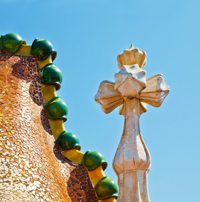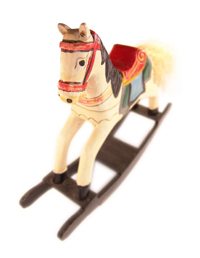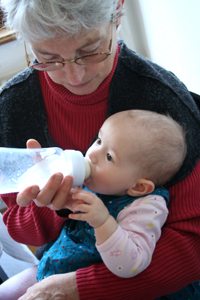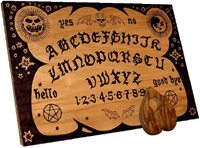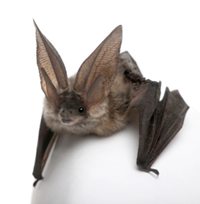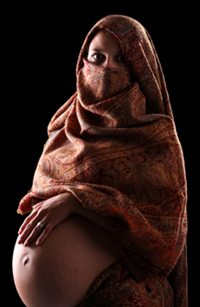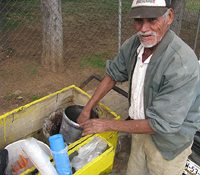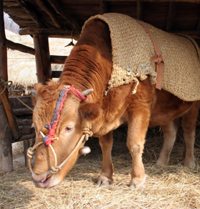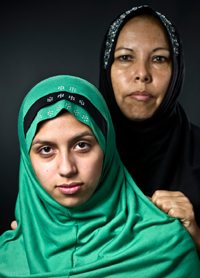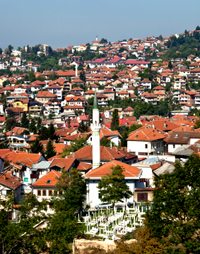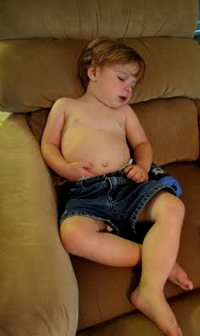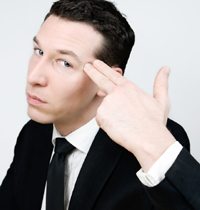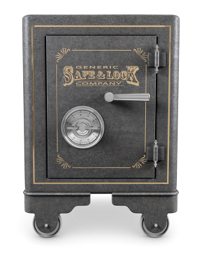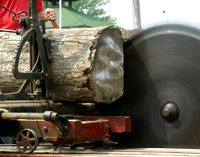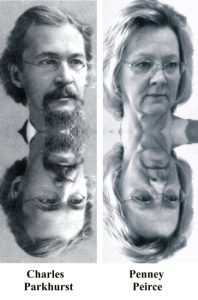
How Derived: Past Life Identifications made by a Spirit Being
Researcher: Penny Peirce
Article by Walter Semkiw, MD From: Born Again and Return of the Revolutionaries
Introducing Penney Peirce
In 1999, I joined an e-mail discussion group called Inpresence, which is made up of published authors whose works focus on the development of intuition and related topics. At one point, I sent an e-mail describing the reincarnation research that I was doing and I asked if anyone in the group knew of other cases that I could study. One person who responded was Penney Peirce, who related that she had a past-life story.
Penney is a professional intuitive, counselor, perceptual skills trainer and lecturer who works throughout the United States, Europe and Japan. She is the author of Frequency, The Intuitive Way: A Guide to Living from Inner Wisdom, The Present Moment: A Daybook of Clarity and Intuition and Dreams for Dummies. I met with Penney in her Novato, California home, north of San Francisco, to learn more about her case. Let me share her story with you.
Penney moved all over the country growing up, with much time spent in the Midwest and some on the East Coast. She moved from New York City to California in the early 1970s. She worked as a corporate art director and graphic designer, but pursued meditation and clairvoyance development in her spare time, in California’s then-burgeoning self-help movement.
Penney has a Session with a Trance Medium, Bobby Jo, and receives Past Life Information from a Spirit Being or Spirit Guide
During that period in the 1970’s, a medium, who I will call Bobby Jo, regularly visited the San Francisco Bay area. In her work as a medium, Bobby Jo let non-physical spiritual beings speak through her to provide clients with information about past lives.
Bobby Jo, who remained in a meditative state during this process, would have no memory of the information conveyed. This type of channeling of spirit beings is typical of how a trance medium works. I myself have worked with a trance medium, Kevin Ryerson, since 2001. Kevin channels a spirit being named Ahtun Re, who has demonstrated the ability to make past life matches with a high degree of accuracy.
Past-life information is reportedly accessed from the Akashic Records, a set of memory banks or a library of the planet’s history, found in the spirit realm. Peirce describes Bobby Jo as a dramatic character, with a jovial nature and a naïve faith. Bobby Jo knew nothing about Penney when they met, nor did Penney reveal information about herself at the time of their private session.
Given this background, Penney was shocked when in her reading, Bobby Jo started to rattle off facts regarding a past lifetime as if she were reading out of an encyclopedia.
Spiritual Communication: With Startlingly Specific Information, Penney Peirce is told by a Spirit Guide that She is the Reincarnation of Charles Parkhurst
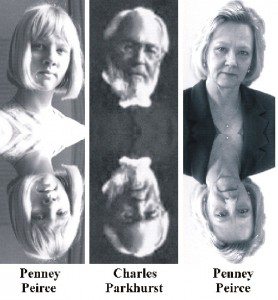 Bobby Jo related that in a past era, Penney’s name was Charles H. Parkhurst, that he had been born on April 17, 1842, in Framingham, Massachusetts, had lived on a farm and then become a prominent minister. Parkhurst enjoyed mountain climbing and used the pulpit to fight crime.
Bobby Jo related that in a past era, Penney’s name was Charles H. Parkhurst, that he had been born on April 17, 1842, in Framingham, Massachusetts, had lived on a farm and then become a prominent minister. Parkhurst enjoyed mountain climbing and used the pulpit to fight crime.
Bobby Jo then reported that Parkhurst had written many books, among them: The Sunny Side of Christianity; A Little Lower than the Angels; Analysis of the Latin Verb Illustrated by the Sanskrit; What Would the World Be Without Religion?; The Blind Man’s Creed and Other Sermons; The Pattern in the Mount; The Pulpit and the Pew; Talks to Young Men; Talks to Young Women; and My Forty Years in New York.
Bobby Jo told Penney that Parkhurst had died on September 8, 1933, at the age of 91, and Bobby Jo then exclaimed in a drawl, “And honey, you died sleepwalking off a roof!”
Given this degree of specific information, Penney tried to verify the past-life detailed by Bobby Jo. In her investigation, she found that there was a record of Charles Parkhurst and that Bobby Jo’s description of him was accurate in every detail, including the long list of books Parkhurst had written.
Reincarnation and Personality Traits: Similarities Between Charles Parkhurst and Penney Peirce
Penney realized that there were many similar personality attributes between Parkhurst and herself, and that there was even a physical resemblance. In assessing this proposed past-life match, Penney reflected that there was no way that Bobby Jo could have memorized all that data on Parkhurst. Further, in Parkhurst, Bobby Jo had identified an individual with character features that matched closely with her own. Penney reflected that this was particularly impressive, given that Bobby Jo knew next to nothing her. Further, this session with conducted in the 1970’s, long before the Internet was in place. Let us review some of these common traits.
Past Life Writing Talent
First of all, Parkhurst and Penney share the distinction of being published authors. Penney, as a writer, demonstrated talent at an early age, winning a National Scholastic Magazine award for a short story.
Peirce has had three books published, as noted above, and in addition she has contributed to a number of other titles, such as The Celestine Prophecy and Tenth Insight Experiential Guides by Carol Adrienne and James Redfield; The Purpose of Your Life by Carol Adrienne; Intuiting the Future by William Kautz; and Channeling: The Intuitive Connection, also by Kautz.
In addition to his scholarly works, Parkhurst also wrote for young people. Similarly, Penney has been writing children’s books since college, incorporating spiritual themes into these stories.
Past Life Traits of Spirituality and Service
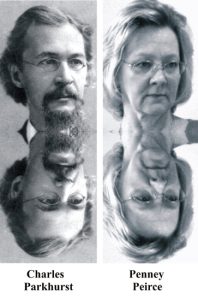
Parkhurst and Penney have shared an interest in spirituality and providing service through the ministry. Parkhurst earned his undergraduate and graduate degrees from Amherst College, then studied theology in Halle, Leipzig, and Bonn. He returned to teach at Williston Seminary, in Massachusetts, and went on to become a Congregational Minister in Lenox, Massachusetts, where he spent six years. He then became the pastor at Madison Square Presbyterian Church in New York City and earned a Ph.D. and a doctorate in divinity (DD) from New York University and Columbia.
Penney Peirce also has had a lifelong affinity for spiritual studies. Ever since she can remember, Penney says that “Why” was the word that motivated her behavior. She voraciously read books on world religions, psychic phenomena, and philosophy. Penney was in search of the core truths contained in all religions and became a licensed minister as a result of this interest. She has even served as a substitute minister at a Unity Church.
Past Life Talent in Latin
Like Parkhurst, Penny has had a natural affinity for ancient languages. Parkhurst taught Greek and Latin and wrote a book called Analysis of the Latin Verb Illustrated by the Sanskrit. Peirce took advanced Latin in high school and scored highly in a state Latin competition. She has also had a fascination with Sanskrit and Egyptian hieroglyphs. Peirce relates that she once had a series of dreams that featured ancient Greek words, words that she had no knowledge of in her waking consciousness.
Past Life Social Activism: Tammany Hall and Whistle Blowing
Charles Parkhurst used his pulpit to right social and spiritual wrongs. Parkhurst lived in New York City at a time when political corruption was a major issue. Tammany Hall, the political regime that held power in the late 1800s, was in collusion with crime bosses. Tammany Hall police officials routinely took bribes, while the general populace stuck their heads in the sand and said nothing.
Parkhurst, who served as President of the Society for the Prevention of Crime, preached perhaps one of the most famous sermons in American history in which he denounced the corruption.
Parkhurst described New York City as “hell with the lid off” and challenged the public to do something about it. A roving reporter happened to be in the audience and the story made the news, arousing much public excitement and a vehement backlash from officials. Parkhurst was attacked and challenged to prove his accusations. He launched his own investigation and soon appeared before a grand jury with facts in hand.
As a result, there ensued the Lexow Investigation and the election of a reform government, the Strong Administration. The appointment of Teddy Roosevelt as the new Police Commissioner followed.
Like Parkhurst, Peirce also has the inclination to act as a whistle-blower and reformer. In her college newspaper, Penney published articles protesting departmental and curriculum changes that she thought were to the detriment of students. When she worked for a large corporation, she launched a letter-writing campaign to warn of unethical practices she observed taking place in her department.
Reincarnation & Love of the Land
Charles Parkhurst and Penney Peirce both grew up on farms and have shared a love for agriculture. Parkhurst, in his autobiography, wrote: “Agriculture is the physical basis of all civilization. It stands to civilization as the body stands to the soul.” (1) Parkhurst went on to say that, “working the soil is the great original art.” (2)
Penney began keeping a journal at age seven and much of her inspiration stemmed from nature and the farm. Further, the National Scholastic Magazine award she won was for a short story about the wheat fields of Kansas. Penney has also loved “working the soil” and has planted a vegetable garden every year since she was twenty.
Past Life Love of Climbing
Parkhurst and Peirce also have shared a love of climbing. Parkhurst was an avid mountaineer, who vacationed annually in the Alps, climbing the Matterhorn, Weisshorn, and other great peaks.
Peirce demonstrated an early affinity for climbing also. At the age of three, she climbed a cedar tree adjacent to her home and peered into the family’s second story bathroom, where her mother was applying makeup. When Penney’s mother looked outside and witnessed her three-year old daughter waving to her from a tree, she almost had a stroke!
The Sleepwalking Death of Charles Parkhurst & Penney’s Nightmares of Falling
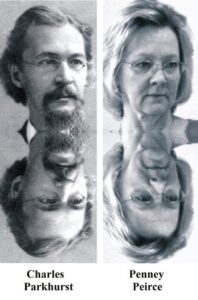 In a tragic incident, Parkhurst’s demise was associated with his love of heights. At the age of 91, Parkhurst had an episode of sleepwalking during which he strode off the roof of his porch, falling to his death.
In a tragic incident, Parkhurst’s demise was associated with his love of heights. At the age of 91, Parkhurst had an episode of sleepwalking during which he strode off the roof of his porch, falling to his death.
In what appears to be a residual effect of this traumatic event. Penney Peirce relates that for years she experienced recurring nightmares of driving off cliffs, falling in elevators, and falling out of trees. At the end of every dream, when she realized that she would die, Peirce would wake up in an agitated condition.
When Penney had her session with Bobby Jo and learned that Parkhurst had died by falling off a roof, her nightmares abated. She had one last dream in which she fell out of a tree in “super slow motion,” consciously reviewing the stages one goes through in dying by falling. After that dream, the nightmares stopped entirely.
Penney believes she had these nocturnal images of falling because Parkhurst was asleep and confused when he died, and that the experience had never been processed in a conscious manner.
Peirce also feels that Parkhurst’s death by sleepwalking out a window and off a roof might be related to her own subliminal desire to leap off high places and fly like a bird. Perhaps Parkhurst had the same urge and found a way to let himself fly that fateful night.
Paradoxically, Penney notes that to this day she still has an attraction, rather than an aversion, to elevated locations, to heights. Fortunately, in this lifetime Peirce lives in a one-story, ranch-style house.
Spiritual Communication: Another Past Life for Penney Peirce as Alice Cary is Revealed
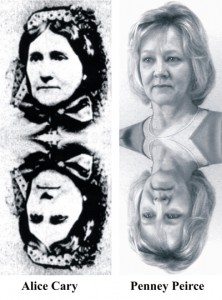 In her session with the Bobby Jo, Penney was also told about an even earlier incarnation. Bobby Jo conveyed that Penney’s name in that lifetime was Alice Cary, that she was born on a farm near Cincinnati, Ohio on April 26, 1820 and that she died on February 12, 1871.
In her session with the Bobby Jo, Penney was also told about an even earlier incarnation. Bobby Jo conveyed that Penney’s name in that lifetime was Alice Cary, that she was born on a farm near Cincinnati, Ohio on April 26, 1820 and that she died on February 12, 1871.
As in the Parkhurst case, Bobby Jo rattled off a series of books that Alice Cary had written, which included the following titles: Poems of Alice and Phoebe Cary; Clovernook: Recollections of Our Neighborhood in the West; Hagar: A Story for Today; Lyra and Other Poems; Clovernook Children; Married, Not Mated; Adopted Daughter and Other Tales; The Josephine Gallery; Pictures of Country Life; Ballads, Lyrics and Hymns; The Bishop’s Son, A Lover’s Diary; The Born Thrall; Snow-Berries: A Book for Young Folks; and Ballads for Little Folks.
Once again, Bobby Jo appeared to have access to an incredible amount of detailed information on spontaneous basis. Bobby Jo also told Penney that Alice Cary had been inseparable from her younger sister, Phoebe, in that lifetime. Bobby Jo related that Phoebe reincarnated as Penney’s younger sister, Paula.
Like with the Parkhurst case, it seemed impossible for Bobby Jo to have memorized all this information about the relatively obscure Cary, especially when validation of the information revealed consistent facial features, personality traits and consistent published works.
Past Life Identity of Penney Peirce as Alice Cary is Validated
As with the Charles Parkhurst past lifetime, even though Penney had never heard of Alice Cary before her session with Bobby Jo, she was able to find Alice Cary in historical records. Once again, as in the past life match regarding Parkhurst, all the detailed information that the spirit guide had conveyed to Penney regarding Cary was correct, including the specific titles of books that Cary had written, the date of birth and the date of death. In addition, the facial features of Cary and Penney are consistent.
Sisters Reunited through Reincarnation
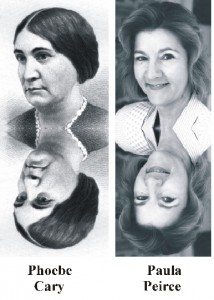 The case of Alice Cary | Penney Peirce features a karmic relationship that seems to have persisted from one lifetime to another. Recall that Bobby Jo told Penney that Alice Cary had a sister named Phoebe and that in this lifetime, Phoebe is Paula, Penny’s contemporary sister.
The case of Alice Cary | Penney Peirce features a karmic relationship that seems to have persisted from one lifetime to another. Recall that Bobby Jo told Penney that Alice Cary had a sister named Phoebe and that in this lifetime, Phoebe is Paula, Penny’s contemporary sister.
It appears that Bobby Jo’s statement is valid. Penney learned that Alice Cary did indeed have a sister named Phoebe. Further, Penney was able to locate images of Phoebe, whose facial features are consistent with those of Penney’s sister, Paula. Phoebe was considered to be one of the wittiest women in America, known for her ability to see the ludicrous in the glamorous, and for her great ability for parody.
Penney has observed that these personality traits are consistent with Paula, who is also described as witty, like Phoebe. Penney once wrote that Paula is characterized by a “dry wit and cheerful, diplomatic disposition.” Paula is also very intelligent, like Phoebe, as demonstrated by her having earned a PhD. In a more mundane similarity, Phoebe was known to have an aversion to housework. In this lifetime, Paula has the same aversion. Paula sets money aside so that she can utilize a maid service, rather than do housework herself.
Past Life Relationship of Alice and Phoebe is Continued in the Lives of Penney and Paula
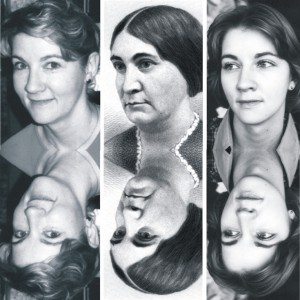 Another significant parallel is observed in the relationships between the sisters, Alice and Phoebe and Penney and Paula. Both sets of sisters are approximately the same number of years apart in age, and both have had incredibly close relationships with each other.
Another significant parallel is observed in the relationships between the sisters, Alice and Phoebe and Penney and Paula. Both sets of sisters are approximately the same number of years apart in age, and both have had incredibly close relationships with each other.
Regarding Alice and Phoebe Cary, a biographer wrote: “The connection between the sisters, who had always treated one another with the utmost consideration and delicacy, was one of the most charming things about their unique dwelling.” (3)
The emotional bond between the sisters was so great, in fact, that they practically died together. After Alice succumbed to tuberculosis, Phoebe was so drained with grief that she passed away six months later. This close connection between the sisters persists in contemporary times. Peirce has noted, “Throughout my life, my younger sister Paula has been my best friend.”
A Past Life Relationship Reflected in the Name Phoebe
The bond between the sisters was rekindled early, as Penney recalls that when Paula was born, she had no feelings of jealousy or sibling rivalry; rather, Penney wanted to be close to her little sister. Later in life, Penney seems to have unconsciously intuited the past-life identity of her sister. Penney relates that as a young woman, she fantasized about a list of names that she would give to her children someday. Interestingly, her favorite name was Phoebe, which she learned meant “shining and bright.”
Penney Peirce as Reincarnated Feminist Leader Alice Cary
 In addition to her literary pursuits, Alice Cary was a social activist, like Parkhurst and Penney. Alice was a firm believer in the abolition of slavery and a proponent of women’s rights. She became the first president of first women’s club in America, the Sorority of Sisters (Sorosis), and was friends with Jane Croly, Elizabeth Cady Stanton, and Susan B. Anthony.
In addition to her literary pursuits, Alice Cary was a social activist, like Parkhurst and Penney. Alice was a firm believer in the abolition of slavery and a proponent of women’s rights. She became the first president of first women’s club in America, the Sorority of Sisters (Sorosis), and was friends with Jane Croly, Elizabeth Cady Stanton, and Susan B. Anthony.
In a similar way, Penney became involved with the feminist movement in New York and California. She also became the art director for a feminist magazine. Alice Cary hated human repression or coercion in any form. Penney Peirce started a nonprofit organization in college to study the harmful brainwashing effects of the mass media and advertising on the general public.
Past Life Talent: Clairvoyance and Similarities in the Spiritual Beliefs of Alice Cary and Penney Peirce
Spiritually, Alice was attached to the Universalist Church and accepted its doctrines, including the belief in reincarnation and that spirits of the deceased could communicate with the living. She wrote:
“Laugh, you who never had
Your dead come back; but do not take from me
…my foolish dream:
That these our mortal eyes
Which outwardly reflect the earth and skies,
Do introvert upon eternity.” (4)
Cary’s biographer noted that Alice also had an interest in prophecy. Alice’s sister and friends related that she would “tell us each our fortune anew, casting our horoscope afresh in her teacup each morning.”
Similarly, Penney pursued parapsychology and clairvoyance development very early in her career. She has made her living as a professional intuitive. Also, Penney has served as a substitute minister for the Unity Church, which has a very similar theology to the Universalist Church.
Reincarnation & Replication of Writing Talent
 Parallels between Cary, Parkhurst and Peirce are apparent from their list of book titles alone. All three have been accomplished writers and all three have written children’s books. Alice Cary was a prolific author of poetry, as well as a writer of nonfiction, just like Penney. In an interesting synchronicity, Alice Cary wrote under the pen name “Patty Lee,” which corresponds to the rhythm and initials of Peirce’s first and middle names, “Penney Lee.”
Parallels between Cary, Parkhurst and Peirce are apparent from their list of book titles alone. All three have been accomplished writers and all three have written children’s books. Alice Cary was a prolific author of poetry, as well as a writer of nonfiction, just like Penney. In an interesting synchronicity, Alice Cary wrote under the pen name “Patty Lee,” which corresponds to the rhythm and initials of Peirce’s first and middle names, “Penney Lee.”
Reincarnation & Love of Nature
Alice Cary had an early quest for knowledge, even reading at night by the light of burning lard when candles were not available to her. Cary loved nature and wrote prolifically about scenes from rural life.
Penney also has a love for nature, as did Parkhurst, and she lives in a setting of rolling farmland. Penney began keeping a journal at age seven and much of her inspiration stemmed from nature, animals, and the farm. Like Alice Cary, Penney published articles and poems in her teens. The National Scholastic Magazine award she won, we recall, was for a short story about Kansas wheat fields.
Reincarnation & Practice of Spirituality in Daily Life
Another parallel Penney has noticed between her own writings and those of Alice Cary and Charles Parkhurst is that all three focused on the need to demonstrate spiritual values in everyday life, in intention and through small actions, and that the practice, the process, and the experience itself is more important than just talking about lofty goals. Peirce has selected the following quotes from their books to illustrate this point. Please note that Penney’s quote was written before she learn of her proposed past lives as Cary and Parkhurst.
Cary: “True worth is in being, not seeming—in doing, each day that goes by, some little good.” (5)
Parkhurst: “Character is the impulse reined down into steady continuance.” (6)
Peirce: “The process, not necessarily the answers, is the sacred thing.” (7)
Reincarnation & Prose On Truth
Parkhurst wrote: “Truth, of course, is from everlasting and has its existence in the being of God, while an idea is only an attempt at truth and comes and goes with the mind that develops it.” (8)
Peirce wrote in her journal: “Information is of the mind. Knowledge is truth, the result of the direct experience of being or Soul. Information is facts, the mere description of knowledge.” (9)
Cary wrote: “For sometimes, keen, and cold, and pitiless truth,/In spite of us, will press to open light/The naked angularities of things,/And from the steep ideal the soul drop/In wild and sorrowful beauty, like a star/From the blue heights of heaven into the sea.” (10)
Reincarnation and Prose on Gratitude
 Parkhurst wrote: “We have enough to make us all happy and thankful if we will be quiet long enough to take an affectionate inventory of our commonplace mercies, and let our hearts feel of them and mix themselves with them till we become saturated with their comfort and awaken into a loving sense of the patient goodness of their Giver.” (11)
Parkhurst wrote: “We have enough to make us all happy and thankful if we will be quiet long enough to take an affectionate inventory of our commonplace mercies, and let our hearts feel of them and mix themselves with them till we become saturated with their comfort and awaken into a loving sense of the patient goodness of their Giver.” (11)
Penney wrote: “Slow down enough to describe in simple terms the things you feel, as though you’re taking inventory. By noticing things, you connect with your world. The ‘feminine mind’ brings you into a sense of beneficence and providence, and as you experience this fully, you may weep, or overflow with praises, or beam with feelings of ecstasy.” (12)
Alice Cary wrote: When I think of the gifts that have honored Love’s shrine—/Heart, hope, soul, and body, all the mortal can give—/For the sake of a passion superbly divine,/I am glad, nay, and more, I am proud that I live!” (13)
Please note that in the Anne Frank | Barbro Karlen reincarnation case, a similarity in content in published writings across lifetimes was also observed.
Reincarnation & Gender Change: Despite Masculine and Feminine Sides of the Soul, Content Stays the Same
Penney notes that she seems to be an interesting link between the masculine, more intellectual, minister, Charles Parkhurst, and the emotional, feminine poet, Alice Cary. In her writings, Penney combines elements of both. It is interesting to observe that in Penney’s reincarnation cases, though the styles of rhetoric may vary with changes in gender and era, core ideas stay the same.
This phenomenon also was observed in the reincarnation case of Paul Gauguin | Peter Teekamp, as Peter replicated ideas and subject matter in his art from the Gauguin lifetime, but he did so in a much more surrealistic way. This is clearly seen in comparing Gauguin’s “Yellow Christ” and Peter’s painting, “Presentation of the Christ.”
Reincarnation & Geographic Correspondences in the Lives of Cary, Parkhurst and Peirce
There are also geographical correspondences between the three lives. Past-life regression therapists have noted that souls often like to retrace their steps, from one lifetime to another. It is almost as if the soul is nostalgic for familiar places and settings of past lives. As such, it appears that prior to incarnating, the soul engineers a life path that will take it to these familiar locations. Planning lifetimes and destiny is discussed in: Principles of Reincarnation
Retracing Past Life Locations in Cincinnati and New York
 As an example, Penney went to college at the University of Cincinnati, in Ohio, only a few miles from where Alice was born. Here, like Cary, Penney began writing poetry in earnest. Also in college, Penney had a boyfriend who wrote poems to and drew portraits of a fictitious woman. Her boyfriend referred to this woman as his muse and he called her “Alice,” as if he were intuiting Penney’s past life as Cary.
As an example, Penney went to college at the University of Cincinnati, in Ohio, only a few miles from where Alice was born. Here, like Cary, Penney began writing poetry in earnest. Also in college, Penney had a boyfriend who wrote poems to and drew portraits of a fictitious woman. Her boyfriend referred to this woman as his muse and he called her “Alice,” as if he were intuiting Penney’s past life as Cary.
Interestingly, Alice Cary had been jilted by a boyfriend when living in Ohio, which prompted her to suddenly move to New York City. Penney wonders whether her college boyfriend might have been the same man who jilted Cary.
After Alice Cary moved to New York, her sister Phoebe soon followed. The women had moved to the city with the intention of making their living from literature—a very adventurous thing to do.
Together, they wrote and published many books of poetry and fiction. In New York, Alice and Phoebe Cary were fondly known as “The Sisters of the West,” as Ohio was still considered the western edge of adolescent America at that time.
The Cary sisters became beloved by the intelligentsia and other types as they hosted a popular literary salon in their home for over fifteen years. Attendees included thinkers, philosophers, early feminists, writers and prominent personalities of the time, such as Horace Greeley, Edgar Allan Poe, John Greenleaf Whittier, and PT Barnum.
In what appears to be a parallel path, Penney also left Ohio abruptly, before graduating from college, and moved to New York City. In New York, Penney, like Alice Cary, soon became involved with a group of feminist writers and other authors. In another geographic correspondence, Penney’s job was situated near Gramercy Park, only blocks from where Alice and Phoebe Cary had lived. In New York, the life of Charles Parkhurst also becomes intertwined with theirs.
Penny’s apartment on West 80th Street was only blocks from where Charles Parkhurst resided on West 74th. She attended night school at New York University and Columbia, which Parkhurst also attended. In time, Penney moved to Park Slope, Brooklyn, close to where Alice and Phoebe are buried in Greenwood Cemetery.
Retracing Past Life Paths to Los Angeles and Framingham, Massachusetts
In another odd parallel, Parkhurst, late in life, traveled from New York to Los Angeles to marry a second time. Similarly, Penney left New York City for Los Angeles to complete her degree in design at the California Institute of the Arts. She also notes that in the year after her session with Bobby Jo, her parents moved near Framingham, Massachusetts, the birthplace and childhood home of Charles Parkhurst. In visiting her parents, Penney has been able to revisit Parkhurst’s old stomping grounds.
Split Incarnation or Parallel Lives
 The compelling reincarnation cases of Charles Parkhurst | Penney Peirce and Alice Cary | Penny Peirce demonstrate a very interesting and important phenomenon, that a soul can animate two different bodies at the same time. I have termed this split incarnation, as it appears that the soul can split itself, or project itself, into different physical bodies at the same time, This phenomenon has also been called parallel lives.
The compelling reincarnation cases of Charles Parkhurst | Penney Peirce and Alice Cary | Penny Peirce demonstrate a very interesting and important phenomenon, that a soul can animate two different bodies at the same time. I have termed this split incarnation, as it appears that the soul can split itself, or project itself, into different physical bodies at the same time, This phenomenon has also been called parallel lives.
Alice Cary, the earliest incarnation in this series of lives, was born in 1820 and died in 1871. Charles Parkhurst was born in 1842, at a time when Alice Cary was 22 years old. Alice Cary died in 1871 at the age of 51, at time when Parkhurst was 29 years old. As such, the lifetimes of Cary and Parkhurst overlapped by 29 years.
Parkhurst died 52 years after the death of Alice Cary, in 1933. Penney Peirce was born in 1949, 16 years after Parkhurst’s death, 50 miles from the location where Parkhurst died.
A very compelling Ian Stevenson, MD past life case involving split incarnation is: The Reincarnation Case of Helmut Kohler | Ruprecht Schultz
Did Cary and Parkhurst Ever Meet?
It is of interest to wonder if Alice Cary and Charles Parkhurst ever crossed paths. Though there is no evidence to support that Cary and Parkhurst ever met, it appears that they did come in close proximity to each other. In 1850, Alice, at 30 years of age, journeyed from Ohio to visit John Greenleaf Whittier at his Massachusetts home, not far from where Parkhurst was living on his family’s farm in Framingham. Parkhurst was as an 8-year-old boy at the time.
The two people had another episode of geographic proximity 20 years later, in the summer of 1870 when Alice Cary made her last foray out of New York City to visit friends in Northampton, Massachusetts. Cary was 50 years old at the time. Parkhurst, who was now 28 years of age, was living nearby in Massachusetts and was married in Northhampton 8 months later.
Parkhurst moved to New York in 1880, nine years after Cary died. Though it appears that the two never met, it is likely that Parkhurst knew of Cary. When Parkhurst was a young man, Cary was in her prime as an author, contributing to many popular magazines of the time. It is possible that Parkhurst read articles written by his split, Alice Cary.
Physical Resemblance: The facial features of Alice Cary, Charles Parkhurst and Penney /principles-of-reincarnationPeirce are consistent.
Past Life Talent: Alice Cary, Charles Parkhurst and Penney Peirce have all been published authors, whose focus has been on spirituality.
Relationships Renewed through Reincarnation: Alice Cary was very close to her sister Phoebe, who appears to have reincarnated as Penney’s sister Paula.
Reincarnation and Gender Change: In these series of cases, Penney had a past lifetime as a male, Charles Parkhurst, and a past lifetime as a female, Alice Cary.
Split Incarnation or Parallel Lives: The lives of Alice Cary and Charles Parkhurst overlapped by 29 years.
Spirit Being or Spirit Guide Involvement: Penny Peirce’s past life identities were revealed by a spirit guide channeled through a medium.
Footnotes:
1. Charles H. Parkhurst, My Forty Years in New York, MacMillian, New York, NY, 1923, p. 20.
2. Charles H. Parkhurst, My Forty Years in New York, MacMillian, New York, NY, 1923, p. 20.
3. National Cyclopedia of American Biography, Vol 1, White and Co., p. 535.
4. Mary Clemmer Ames: Alice and Phoebe Cary, Hurd and Houghton, New York, NY, 1873, p. 93.
5. Quote provided by Penney Peirce from an Alice Cary website, source not identified.
6. Quote provided by Penney Peirce from a Charles Parkhurst website, source not identified.
7. Penney Peirce:The Intuitive Way, Beyond Words Publishing, Hillsboro, OR, 1997, p. 10.
8. Charles H. Parkhurst: My Forty Years in New York, p. 230.
9. Penney Peirce, from personal unpublished journal.
10. The Ladies’ Repository, Sept. 1855, “Literary Women of America; Number VI, Some Notice of the Writing Genius of Alice Cary,” editor, Rev. D. W. Clark.
11. Charles H. Parkhurst, A Thanksgiving Message from Dr. Parkhurst, the Foremost Patriotic Preacher in America,” Amherst Library.
12. Penney Peirce: The Intuitive Way, Beyond Words Publishing, Hillsboro, OR, 1997, p. 82.
13 .From “God is Love, “ by Alice Cary, reprinted in: Mary Clemmer Ames, Alice and Phoebe Cary, p. 263.
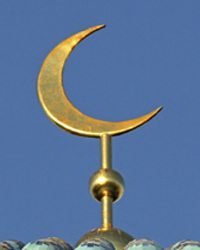 In a book written by Jim Tucker, MD of the University of Virginia, entitled Life Before Life, Dr. Tucker summaries the work of Ian Stevenson, MD, which was performed over the span of 40 years. In Life Before Life, Dr. Tucker addresses and refutes every argument that a skeptic may raise to try to dismiss Dr. Stevenson’s work.
In a book written by Jim Tucker, MD of the University of Virginia, entitled Life Before Life, Dr. Tucker summaries the work of Ian Stevenson, MD, which was performed over the span of 40 years. In Life Before Life, Dr. Tucker addresses and refutes every argument that a skeptic may raise to try to dismiss Dr. Stevenson’s work. In this reincarnation case, a Muslim boy had spontaneous memories of being a Christian in a past lifetime. This case, like the case of Anne Frank | Barbro Karlen, demonstrates that religion, nationality & ethnic affiliation can change from one incarnation to another. This observation has the potential to create greater peace in the world.
In this reincarnation case, a Muslim boy had spontaneous memories of being a Christian in a past lifetime. This case, like the case of Anne Frank | Barbro Karlen, demonstrates that religion, nationality & ethnic affiliation can change from one incarnation to another. This observation has the potential to create greater peace in the world.